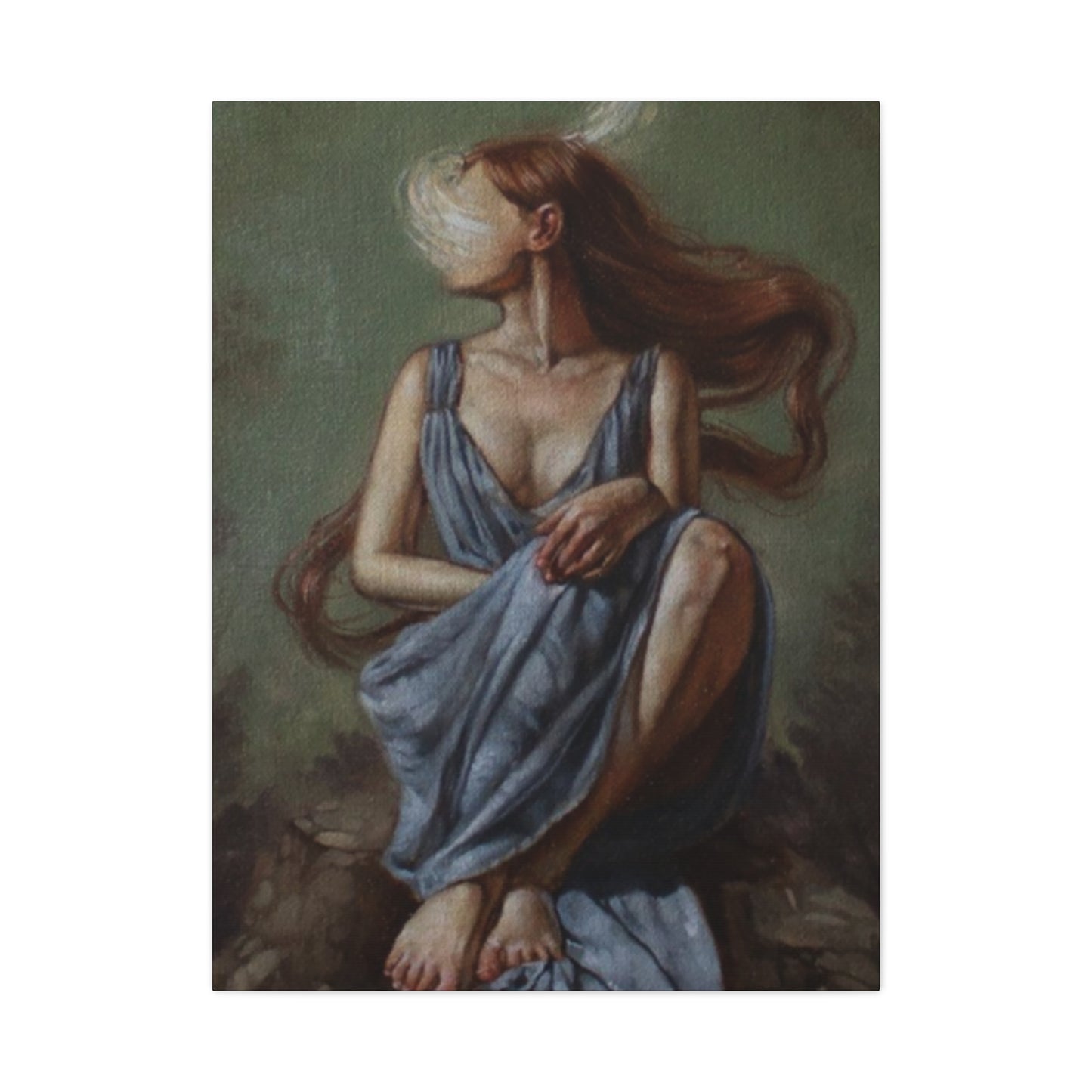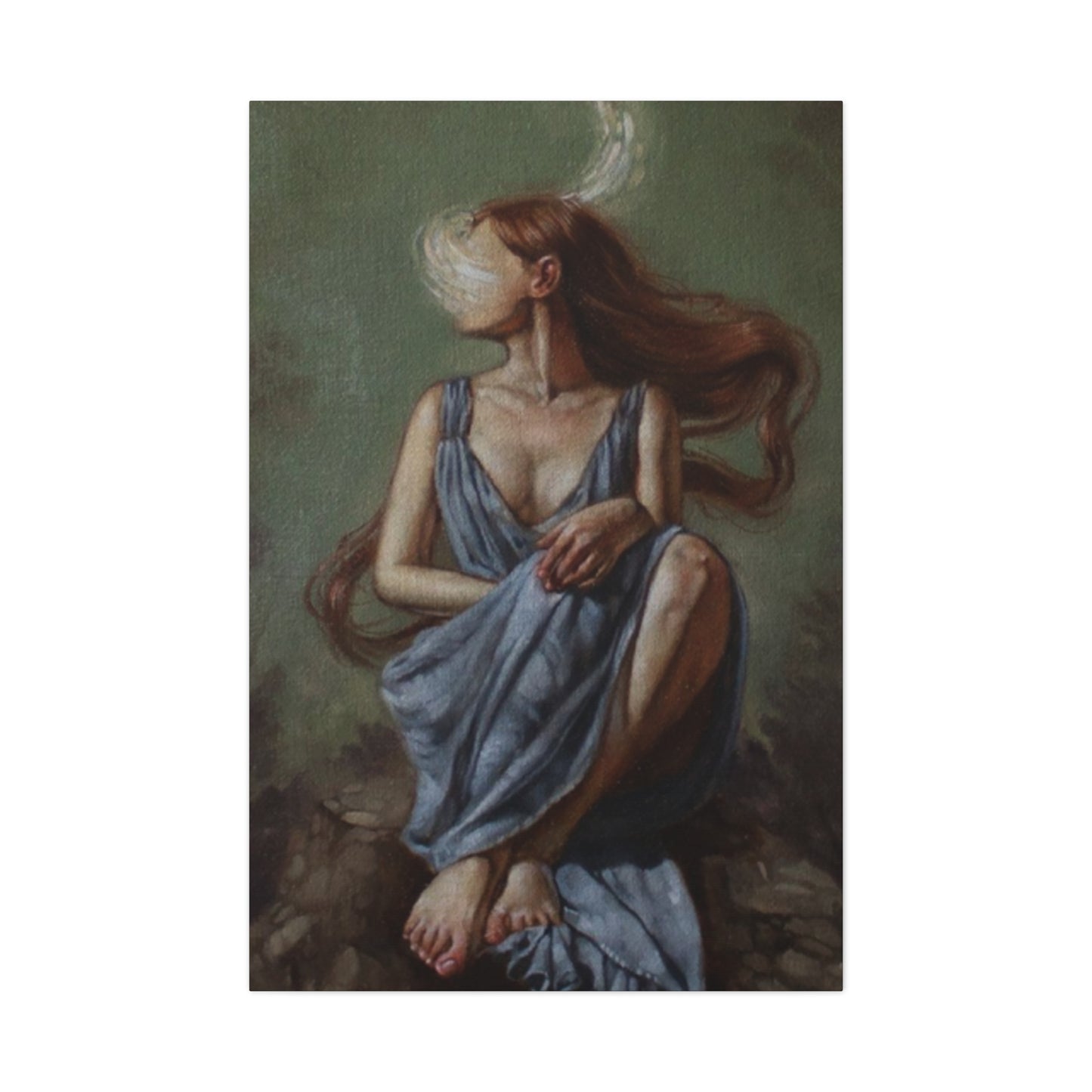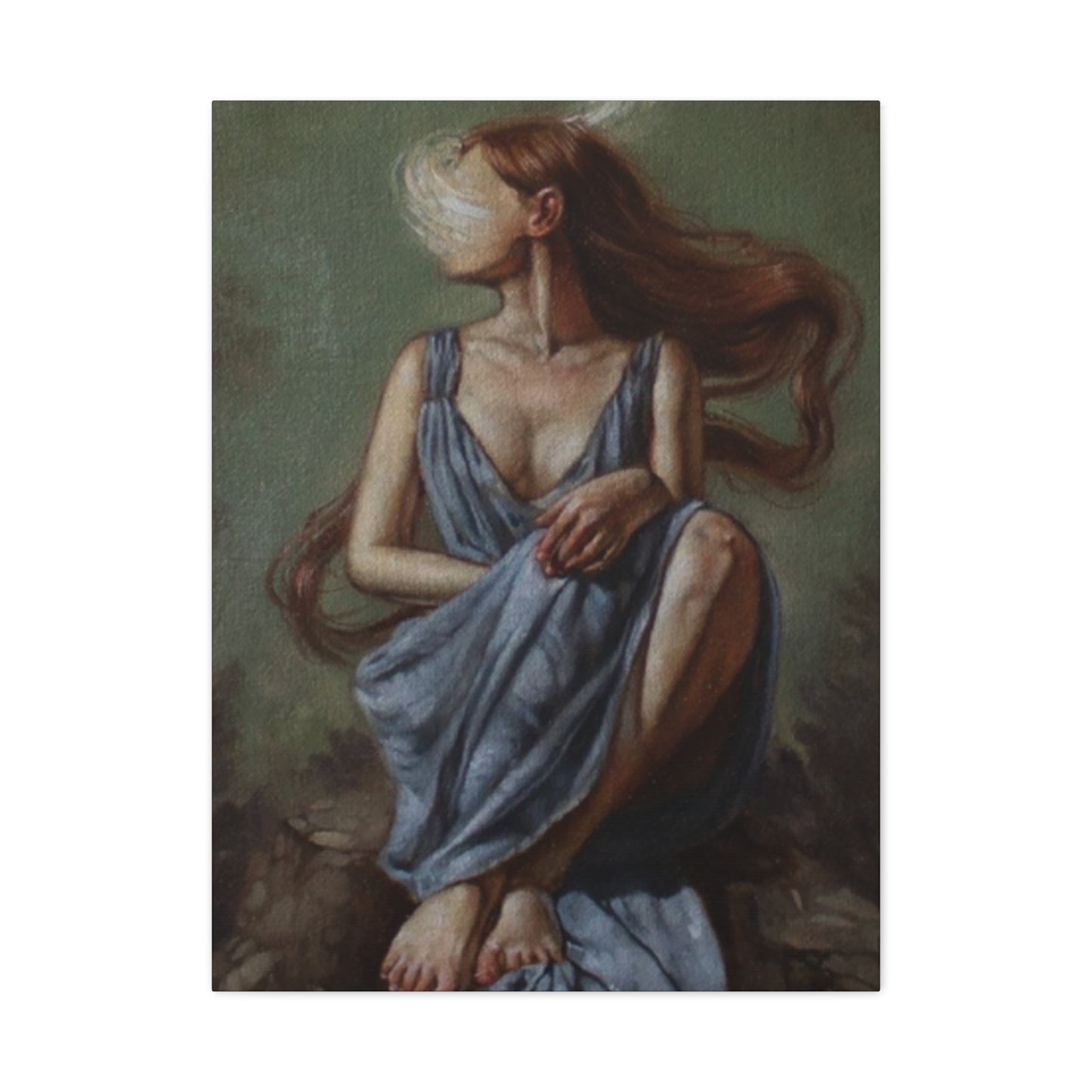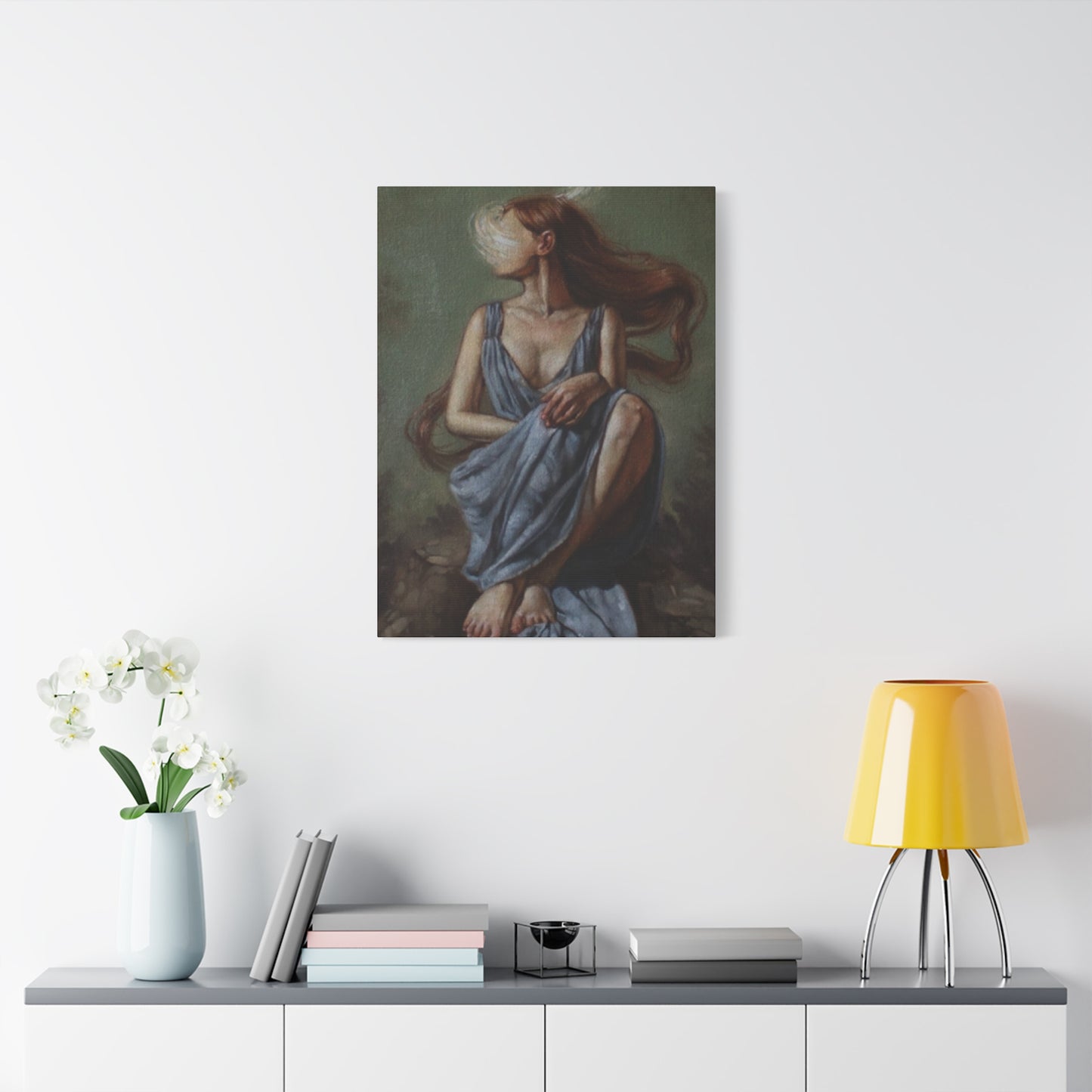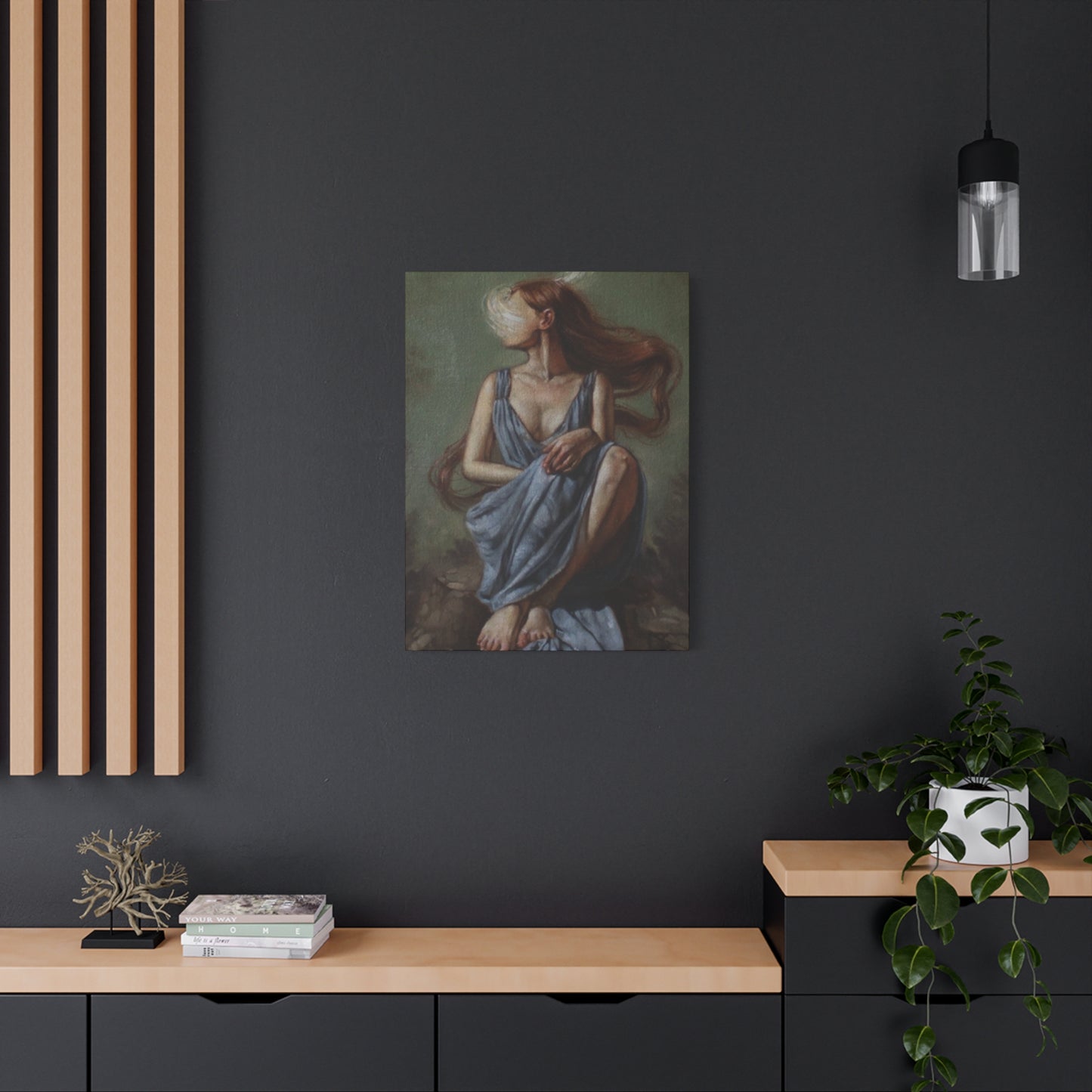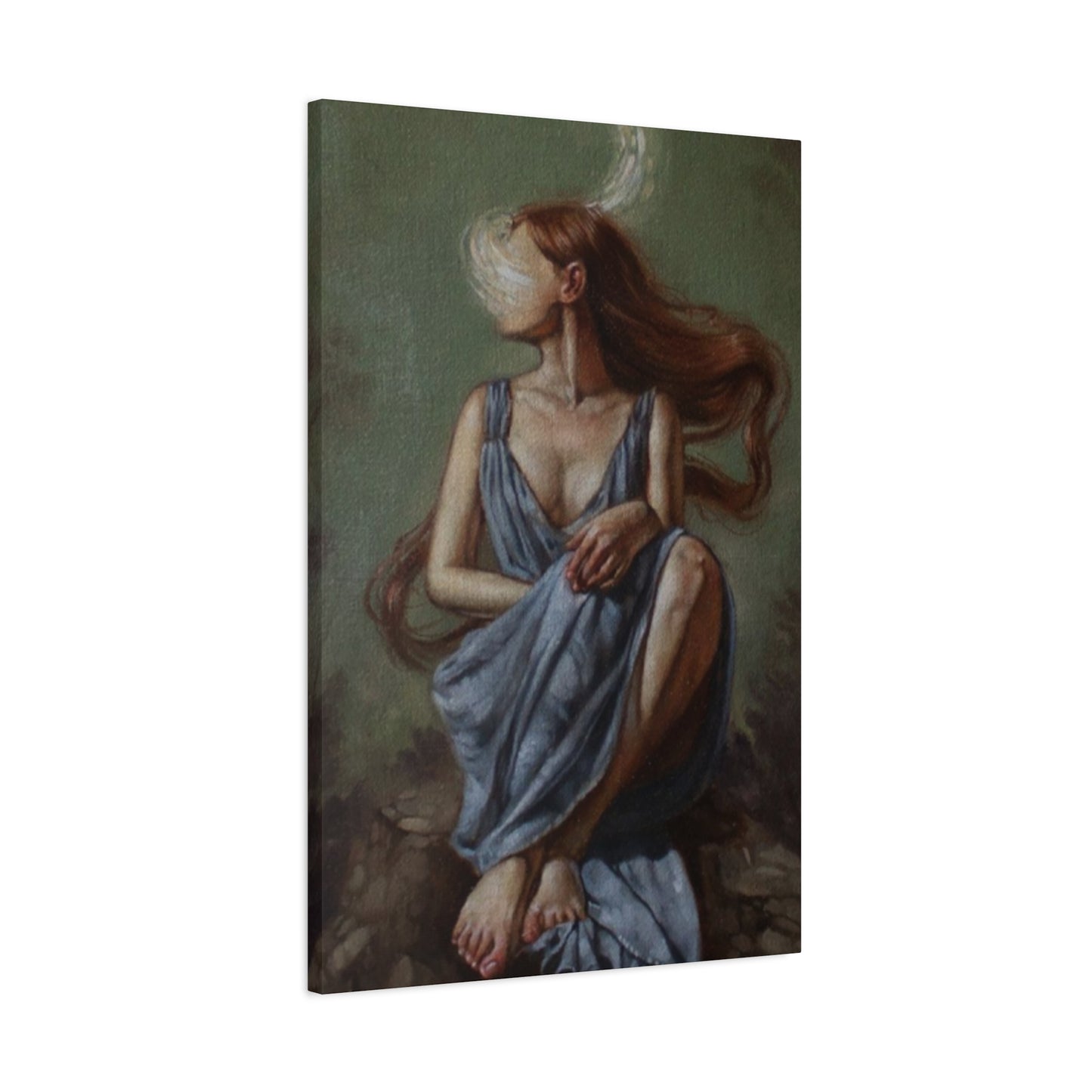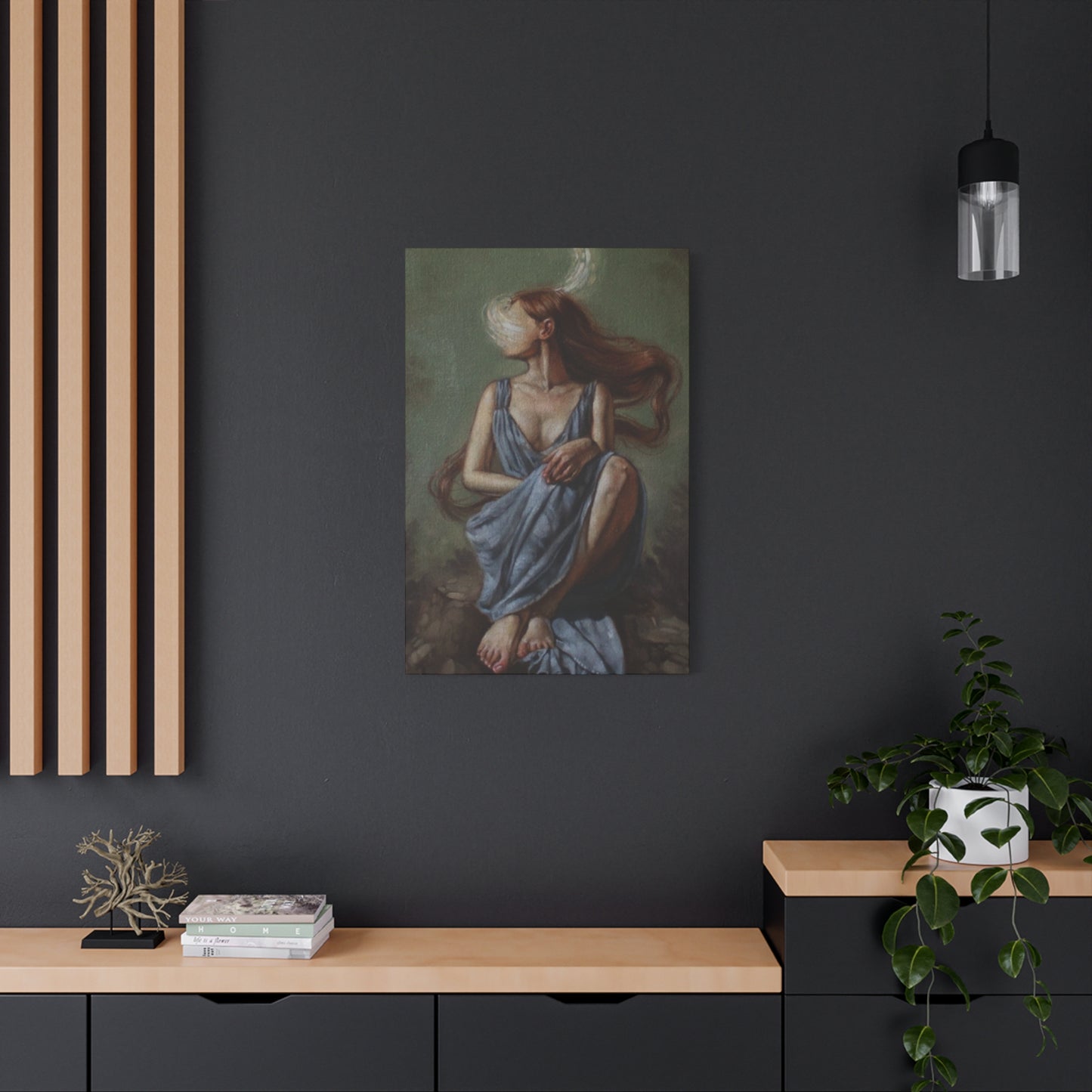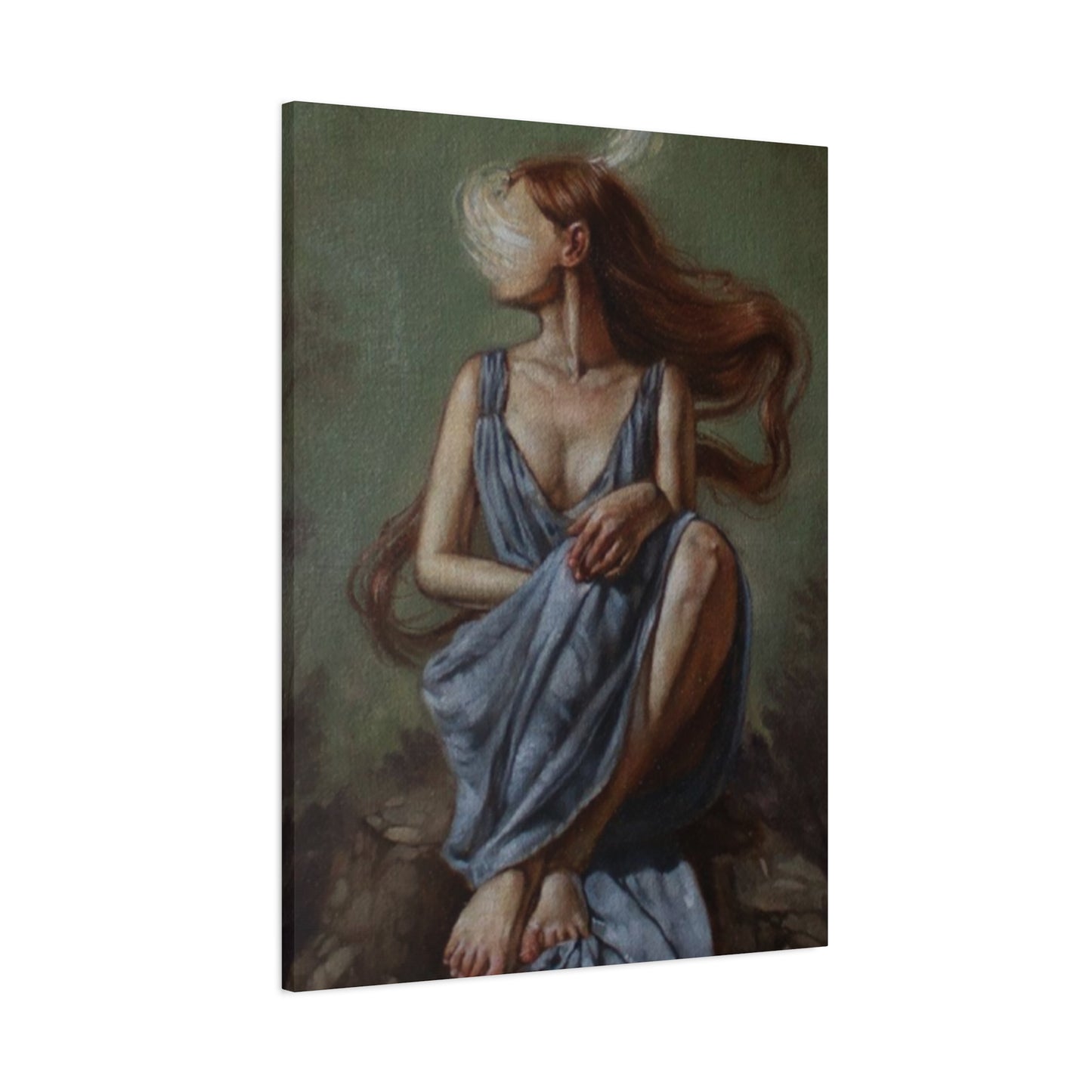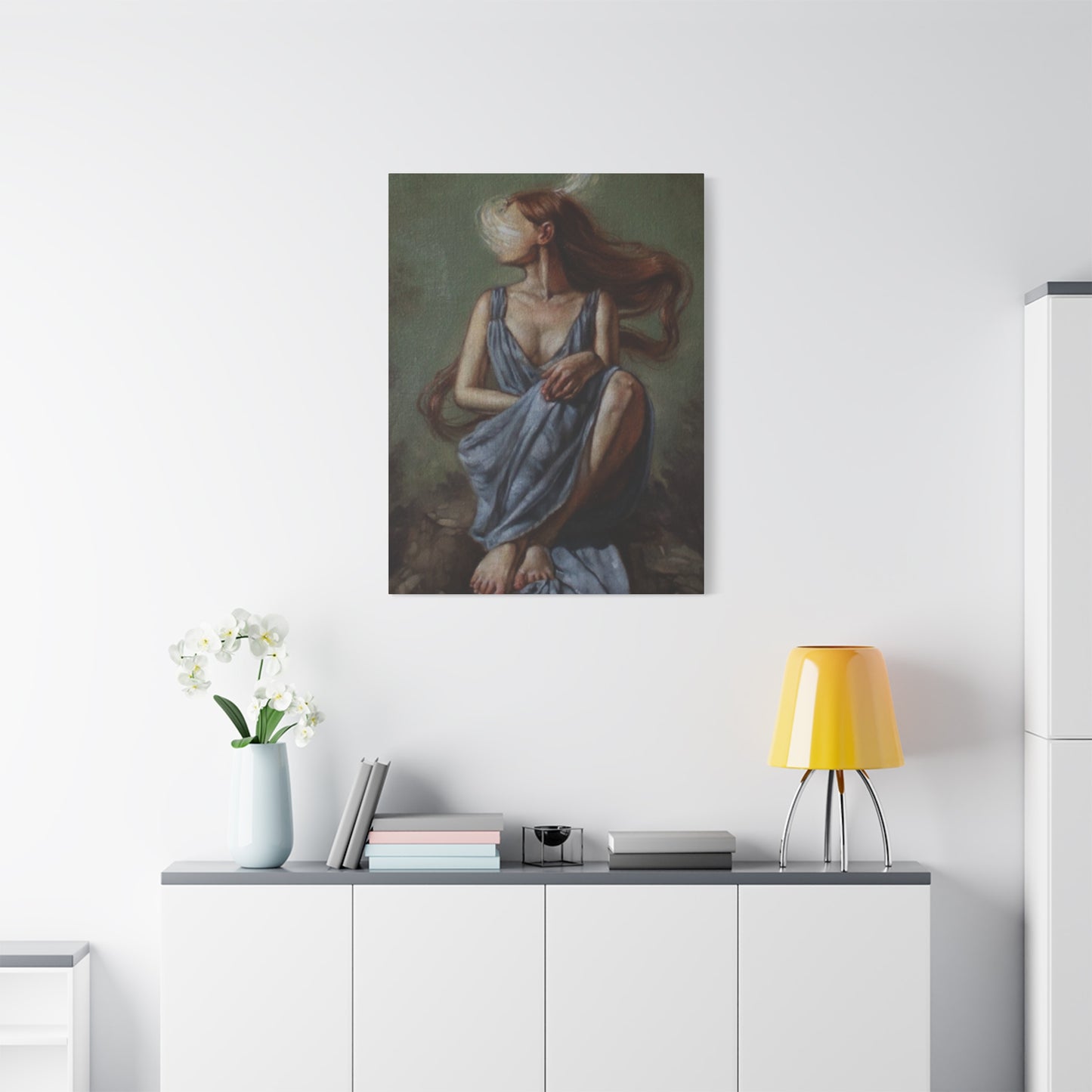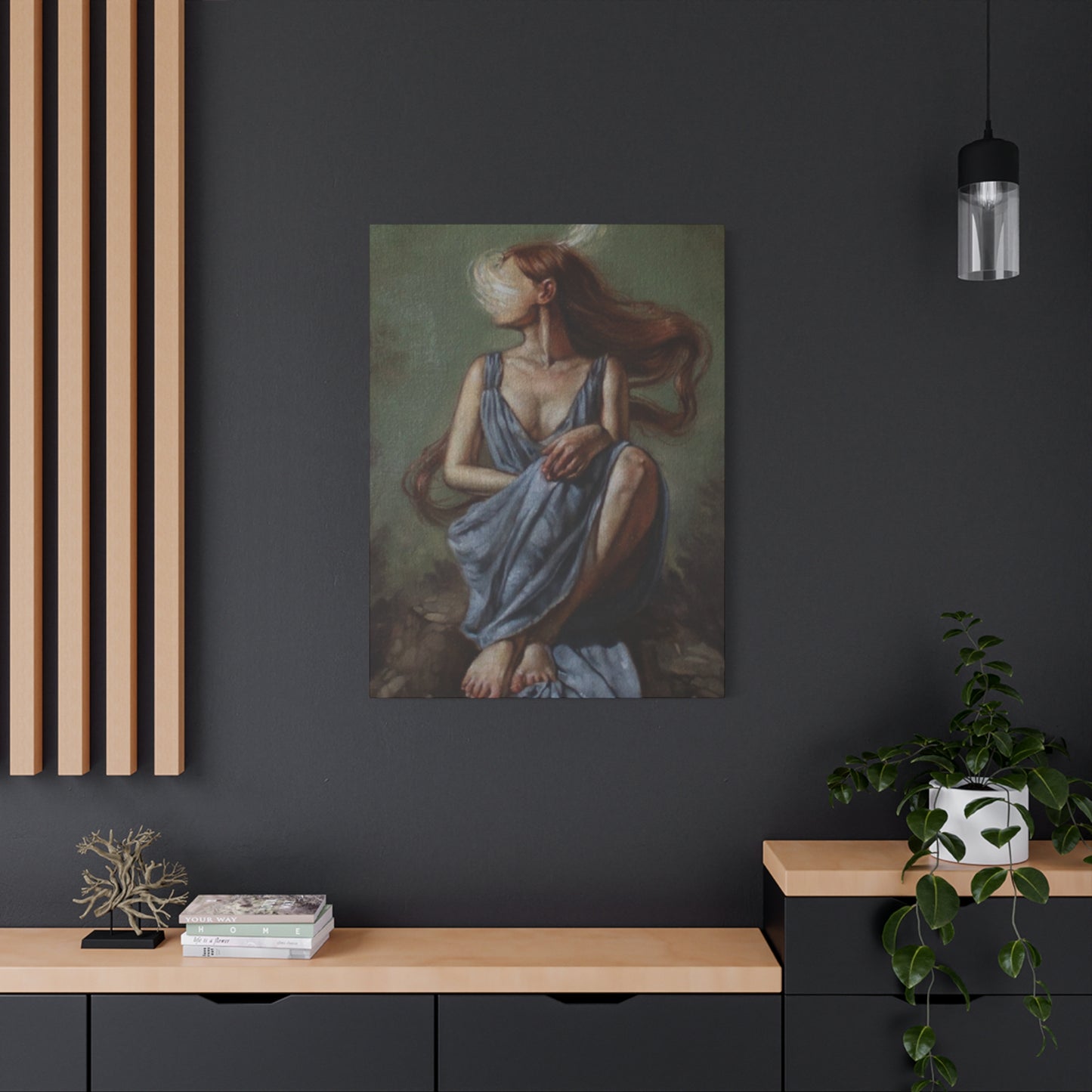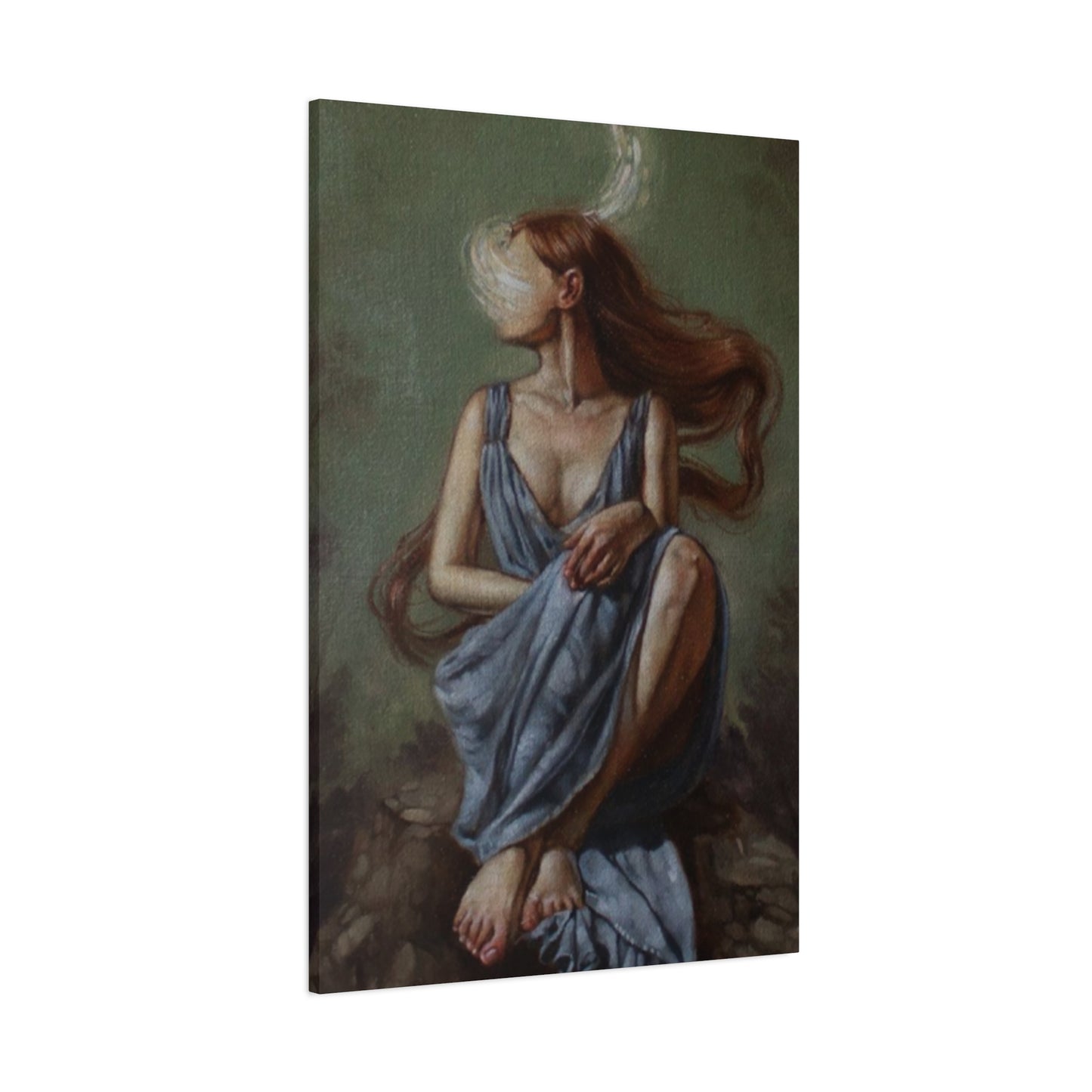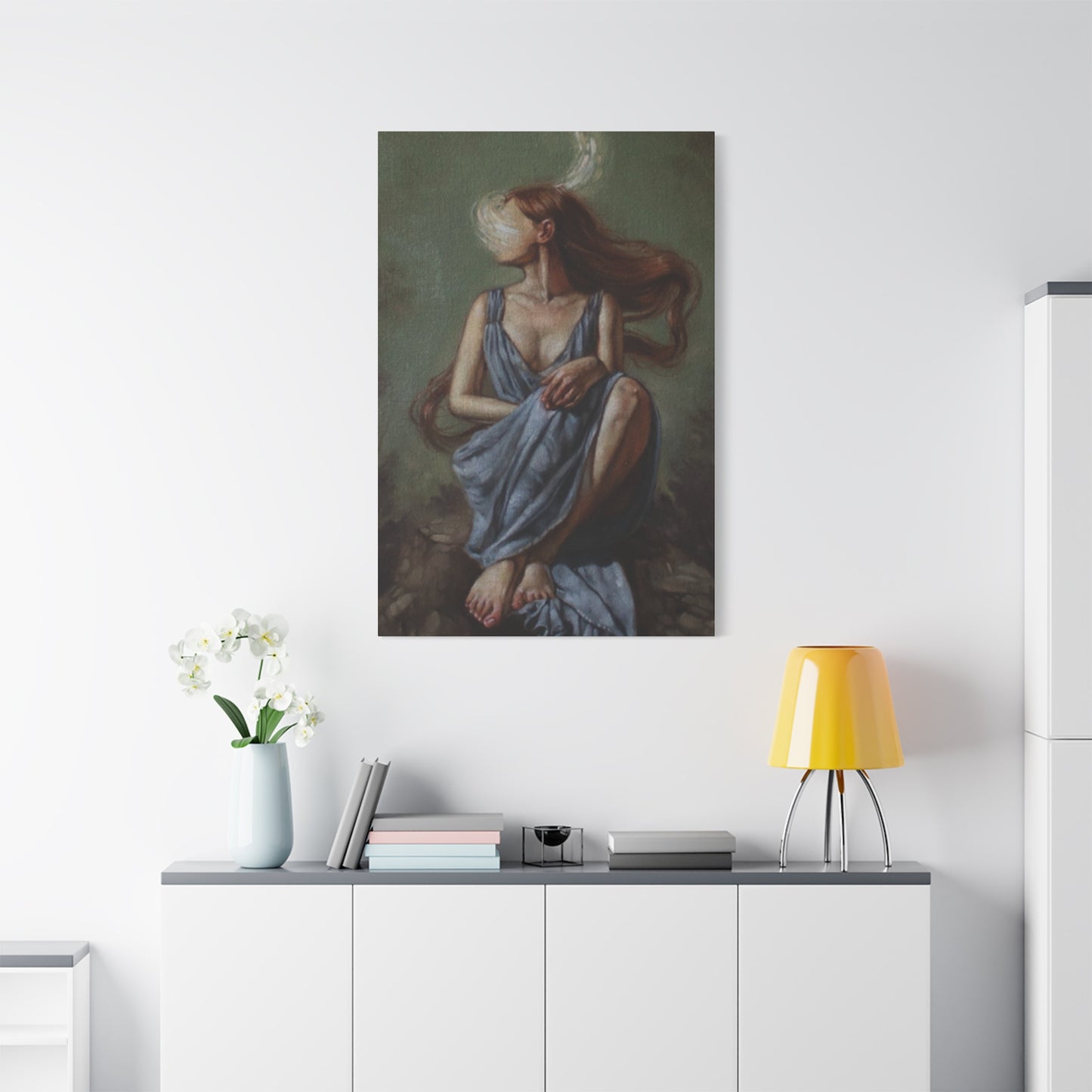Women in Water: The Evolution of Abstract Modernism in Contemporary Wall Art
The intersection of feminine imagery and aquatic themes has created one of the most captivating movements in contemporary abstract modernism wall art. This artistic fusion celebrates the fluid connection between women and water, transforming traditional representations into bold, interpretive expressions that challenge conventional perspectives. The movement represents more than aesthetic appeal; it embodies a philosophical exploration of femininity, nature, and the human experience through the lens of modernist abstraction.
Abstract modernism has revolutionized how we perceive and interpret visual art, particularly in the context of feminine representation within aquatic environments. Artists have discovered that water serves as the perfect metaphorical canvas for expressing the complexity, depth, and fluidity of feminine identity. The resulting artworks transcend literal representation, offering viewers an emotional and intellectual journey through color, form, and symbolic imagery that resonates on multiple levels.
The Historical Foundation of Water Symbolism in Feminine Art
Throughout art history, water has maintained a profound symbolic relationship with feminine energy and identity. Ancient civilizations depicted goddesses emerging from oceans, rivers flowing as representations of fertility, and water serving as the primordial source of life itself. This historical foundation provides contemporary artists with a rich vocabulary of symbols and meanings that continue to evolve within modern abstract contexts.
The Renaissance period witnessed artists exploring the relationship between women and water through mythological narratives, particularly stories of Venus rising from the sea foam or nymphs dwelling in sacred springs. These classical interpretations established water as an intrinsic element connected to feminine beauty, mystery, and transformative power. Modern abstract artists have inherited this symbolic language while rejecting the constraints of realistic representation, instead embracing expressive techniques that capture the essence rather than the appearance of their subjects.
Impressionist painters began the shift toward abstraction by focusing on the interplay of light on water and the emotional atmosphere of aquatic scenes. Artists like Claude Monet demonstrated how water could be represented through color relationships and brushwork rather than precise detail. This approach laid groundwork for subsequent generations to push further into abstraction, eventually arriving at the contemporary movement where women and water merge into unified artistic expressions that prioritize feeling and interpretation over literal depiction.
The twentieth century brought revolutionary changes to artistic philosophy, with movements like Cubism, Expressionism, and Abstract Expressionism dismantling traditional representation. Female artists gained increasing prominence during this period, bringing fresh perspectives to how feminine subjects could be portrayed. Their contributions challenged male-dominated narratives and introduced nuanced understandings of feminine experience that naturally aligned with the fluid, transformative qualities of water imagery.
Modernist Principles Applied to Feminine Aquatic Imagery
Abstract modernism operates on fundamental principles that reject representational accuracy in favor of emotional truth and conceptual exploration. When applied to themes of women in water, these principles create artwork that communicates through color relationships, gestural marks, compositional balance, and symbolic associations rather than recognizable figures. The modernist approach liberates artists from the obligation to depict bodies accurately, instead allowing them to convey the sensation of being submerged, the freedom of floating, or the power of emerging from water.
The reduction of form to essential elements characterizes modernist abstraction. In feminine aquatic art, this might manifest as sweeping curves suggesting a body without defining it, or color gradations that evoke underwater depths without painting specific scenes. This reductive approach requires viewers to engage actively with the work, completing the image through their own interpretations and emotional responses. The collaboration between artist and viewer becomes central to the artwork's meaning.
Modernist color theory plays a crucial role in these compositions. Artists employ color not to describe what they see but to express what they feel. Blues might convey depths of emotion rather than literal water, while flesh tones dissolve into abstract washes that suggest presence without definition. The juxtaposition of warm and cool tones creates dynamic tension that mirrors the relationship between human warmth and water's cooling touch, between solid form and liquid flow.
Texture and material experimentation distinguish contemporary abstract modernist works from their predecessors. Artists layer paints, incorporate mixed media elements, and employ unconventional application techniques to create surfaces that invite tactile engagement. These textural variations might suggest water ripples, skin surfaces, or the boundary where these elements meet and merge. The physical properties of the artwork become as significant as the visual imagery in communicating the theme.
Psychological Dimensions of Feminine Water Imagery
Water imagery in art taps into deep psychological associations embedded in human consciousness. Water represents the unconscious mind in Jungian psychology, serving as a metaphor for emotions, intuition, and the hidden aspects of personality. When combined with feminine subjects, these associations intensify, creating artwork that speaks to fundamental aspects of human experience and identity formation.
The fluidity of water mirrors psychological concepts of identity as mutable rather than fixed. Abstract representations of women in water environments challenge rigid definitions of femininity, suggesting instead that feminine identity flows, adapts, and transforms across different contexts and life stages. This philosophical position resonates with contemporary understandings of gender as spectrum rather than binary, making these artworks particularly relevant to current cultural conversations.
Immersion in water evokes universal memories of the womb, the original aquatic environment where all human life begins. Artwork depicting feminine figures in water therefore carries implicit references to birth, motherhood, and the cycle of life. Abstract treatments of these themes allow viewers to connect with these primal experiences without the discomfort that highly realistic depictions might provoke, creating space for contemplation and emotional processing.
The boundary between body and water becomes a site of philosophical inquiry in abstract compositions. Where does the figure end and the water begin? This ambiguity reflects questions about selfhood and connection to larger natural systems. The dissolution of clear boundaries suggests that individual identity exists in relationship to environment, that we are permeable beings constantly exchanging with our surroundings rather than isolated entities maintaining rigid separation.
Abstract Modernist Water Compositions
Contemporary artists employ diverse technical methods to create abstract modernist works featuring feminine aquatic themes. Layering techniques allow colors to show through subsequent applications, creating depth that mimics the way light penetrates water. This approach produces luminous effects that capture the ethereal quality of underwater environments while maintaining abstract sensibilities.
Gesture and mark-making communicate energy and movement essential to water imagery. Bold brushstrokes might suggest currents or waves, while delicate marks indicate ripples or the gentle motion of floating. The artist's physical engagement with the canvas becomes visible in these marks, creating a record of their creative process that adds temporal dimension to the finished work. Viewers sense not just the final image but the actions that brought it into being.
Drip techniques and controlled pouring allow paint to flow across the canvas in ways that reference water's natural movement. Jackson Pollock famously employed drip painting, though not specifically for feminine aquatic themes, but contemporary artists have adapted such techniques to create works where paint's fluid behavior becomes integral to the subject matter. These methods introduce elements of chance and spontaneity that align philosophically with water's unpredictable nature.
Color field painting offers another approach particularly effective for aquatic abstraction. Large areas of color create immersive environments that surround viewers with chromatic experience. When applied to feminine water themes, color fields might evoke the sensation of being underwater, surrounded by blue depths, with subtle variations suggesting light, movement, and presence without literal representation. This technique emphasizes emotional response over intellectual interpretation.
Symbolic Language in Contemporary Feminine Water Art
Abstract modernist artists working with feminine aquatic themes develop personal symbolic vocabularies that communicate meaning beyond literal representation. Curved lines often suggest feminine forms and water's flowing nature simultaneously, creating visual poetry where single elements carry multiple associations. The curve becomes a universal symbol connecting disparate concepts through formal similarity.
Color symbolism extends traditional associations while introducing personal innovations. Blue conventionally represents water but also melancholy, spirituality, and infinity. Artists might complicate these associations by introducing unexpected hues, such as fiery oranges or electric purples, suggesting that water and femininity contain multitudes beyond conventional expectations. These color choices invite viewers to expand their understanding of both subjects.
Negative space functions symbolically in abstract compositions, representing absence, potential, or the void from which form emerges. In feminine aquatic art, negative space might suggest the ineffable aspects of identity that resist definition, the spaces between conscious thoughts, or the openness required for transformation. The interplay between painted areas and untouched canvas creates rhythms that guide visual exploration while allowing breathing room for contemplation.
Fragmentation and partial representation symbolize the impossibility of capturing complete truth through artistic means. An abstract work might suggest portions of a figure without showing the whole, acknowledging that identity cannot be completely known or represented. This honest approach to art's limitations becomes a strength, inviting viewers to recognize the mystery inherent in both artistic creation and human existence.
Cultural Influences Shaping Contemporary Aquatic Abstraction
Global artistic traditions contribute to contemporary abstract modernist approaches to feminine water imagery. Japanese aesthetics, particularly concepts like wabi-sabi embracing imperfection and impermanence, influence how artists approach subjects that inherently involve flux and change. The Japanese relationship with water as sacred element appears in contemporary works through reverent treatment of aquatic themes and attention to natural rhythms.
Indigenous perspectives on water as living entity with spiritual significance have gained increasing recognition in contemporary art discourse. Artists incorporating these worldviews create works where water transcends mere setting to become an active presence with agency. This philosophical position transforms feminine aquatic art from decoration into spiritual commentary on humanity's relationship with natural elements and the sacred feminine principles many Indigenous cultures honor.
African artistic traditions emphasizing pattern, rhythm, and communal meaning inform contemporary abstract approaches that prioritize visual music and collective experience over individual representation. The integration of these influences creates artwork that invites communal viewing and interpretation, where meaning emerges through shared engagement rather than solitary contemplation. This approach challenges Western art's traditional emphasis on individual genius and private communion with artworks.
Middle Eastern and South Asian artistic heritage contributes intricate pattern work and sophisticated color relationships to contemporary abstract vocabularies. The mathematical precision underlying Islamic geometric patterns combines with organic fluidity in works that merge structural rigor with natural flow. This synthesis creates compositions that satisfy both intellectual appreciation for formal relationships and emotional response to expressive content.
The Role of Feminism in Aquatic Abstract Modernism
Feminist art movements have profoundly influenced how contemporary artists approach feminine subjects, including aquatic imagery. Early feminist artists rejected the male gaze that had dominated Western art history, refusing to present female bodies primarily for male viewing pleasure. Abstract approaches offered strategies for representing feminine experience from feminine perspectives, focusing on inner realities rather than external appearance.
The personal is political became a guiding principle for feminist artists, validating personal experience as worthy artistic subject matter. Works depicting women in water might reference private moments of bathing, swimming, or simply being with water in ways that honor ordinary feminine experience as significant. This validation challenges hierarchies that privileged public, masculine domains while dismissing private, feminine spheres as trivial.
Body positivity movements intersect with abstract feminine aquatic art by presenting bodies that don't conform to conventional beauty standards or by abstracting bodies to the point where judgments about appearance become irrelevant. Water's concealing and revealing properties offer metaphorical opportunities to explore visibility, privacy, and the choice to show or hide oneself. Abstract treatments amplify these themes by making the choice to reveal or conceal an artistic decision rather than a given.
Intersectional feminism recognizes that feminine experience varies across race, class, sexuality, and other identity dimensions. Contemporary artists create works that acknowledge this diversity, moving beyond universal woman as concept to honor specific perspectives and experiences. Abstract modernism accommodates this specificity while maintaining accessibility, allowing viewers from different backgrounds to find resonance without requiring identical interpretation.
Environmental Themes in Water-Based Feminine Art
Growing environmental consciousness has introduced ecological themes into contemporary abstract art featuring water. Artists use feminine aquatic imagery to comment on water pollution, climate change, and humanity's relationship with aquatic ecosystems. These works transform decorative subjects into activist statements, leveraging aesthetic appeal to engage viewers with urgent environmental concerns.
The feminine body in polluted water becomes a powerful metaphor for environmental degradation affecting human health and wellbeing. Abstract treatments might incorporate industrial colors, harsh textures, or discordant compositions that communicate disturbance without literal depiction. This approach allows artists to address difficult subjects in ways that remain visually engaging rather than didactically repellent, drawing viewers into contemplation of uncomfortable realities.
Water scarcity affects billions globally, and artists respond by creating works that honor water as precious resource rather than unlimited commodity. Feminine figures in relation to scarce water might explore themes of conservation, access inequality, and the sacred nature of this life-sustaining element. Abstract approaches prevent these works from becoming simple propaganda, instead creating layered meanings that respect complexity while advocating for change.
Rising seas and changing coastlines directly impact human populations, with women and children often experiencing disproportionate vulnerability during environmental disasters. Artists document these realities through abstraction that captures emotional truth of displacement and loss without exploiting specific tragedies. The universalizing tendency of abstraction allows these works to represent both specific events and broader patterns, creating art that speaks across geographical and temporal boundaries.
Spiritual and Mythological Dimensions of Water Imagery
Water holds spiritual significance across virtually all religious and spiritual traditions, serving as purification agent, sacred boundary, and symbol of transcendence. Contemporary artists engaging feminine aquatic themes often draw consciously or unconsciously on these deep spiritual associations, creating works that function on devotional or contemplative levels beyond aesthetic appreciation.
Baptism and ritual cleansing practices position water as transformative substance that changes spiritual status. Abstract representations of women in water can evoke these transformative qualities without adhering to specific religious iconography, creating spiritual art accessible to diverse viewers. The suggestion of emergence or cleansing communicates universal spiritual concepts through visual language that transcends denominational boundaries.
Water goddesses populate mythologies worldwide, from Oshun in Yoruba tradition to Saraswati in Hindu belief to numerous river and ocean deities in ancient Greek and Roman pantheons. Contemporary artists revive and reimagine these divine feminine figures through abstract modernist approaches that honor traditional associations while avoiding cultural appropriation or simplistic recreation. These works contribute to ongoing conversations about sacred feminine principles in contemporary spirituality.
The liminal nature of water as substance that flows between states creates symbolic space for meditation on transitions and thresholds. Feminine figures at water's edge or within water occupy these liminal zones, representing beings in transition or capable of navigating between different realms of experience. Abstract treatments emphasize the threshold quality rather than specific locations, inviting viewers to consider their own relationship with change and transformation.
Market Trends and Collecting Feminine Aquatic Abstract Art
The contemporary art market has shown increasing interest in abstract modernist works featuring feminine aquatic themes, driven by multiple factors including aesthetic appeal, thematic relevance, and investment potential. Collectors seek these pieces for residential spaces, corporate environments, and hospitality venues where the calming qualities of water imagery create desired atmospheres.
Interior design trends favoring spa-like environments and biophilic design principles that connect indoor spaces with natural elements have increased demand for water-themed artwork. Abstract approaches offer sophistication and visual interest without the limitations of photographic realism, making them versatile choices for diverse aesthetic contexts. The combination of feminine subjects and water imagery appeals to collectors seeking artwork that feels both contemporary and timeless.
Emerging and mid-career artists working in this genre often find more accessible entry points to the market compared to other contemporary art categories. The decorative appeal of these works creates demand from hospitality and commercial sectors while their conceptual depth attracts serious collectors. This dual market position allows artists to sustain practices while developing more challenging work.
Limited edition prints and reproductions make feminine aquatic abstract art accessible to broader audiences beyond original work collectors. High-quality digital reproduction technology has democratized access to important artworks, allowing people to experience these pieces in their homes regardless of budget constraints. While some purists object to reproduction, this accessibility contributes to visual literacy and cultural engagement with contemporary art.
Creating Cohesive Collections with Aquatic Abstract Themes
Collectors and designers building cohesive art collections around feminine aquatic abstraction benefit from understanding how individual pieces interact within spaces. Series by single artists offer inherent coherence through consistent technique and vision, creating unified statements when displayed together. However, combining works by different artists can produce dynamic conversations between varying approaches to shared themes.
Color relationships across multiple pieces create visual harmony essential to successful collections. A palette dominated by blues and greens suggests underwater environments and creates cooling, calming atmospheres. Introducing warmer accent colors through select pieces prevents monotony while maintaining thematic consistency. The balance between unity and variety determines whether collections feel cohesively curated or repetitively limited.
Scale variation adds visual interest and hierarchical structure to multi-piece installations. A large dominant work establishes thematic presence, while smaller companion pieces explore specific aspects of the central theme. This approach mimics natural perception, where certain elements capture attention while details gradually reveal themselves through sustained viewing. Thoughtful scale relationships guide viewer experience through the collection.
Framing and presentation choices significantly impact how abstract works function within spaces. Floating frames that separate artwork from walls create dimension and emphasize the art object's physical presence. Gallery wraps that continue imagery around canvas edges suit contemporary minimalist spaces. Traditional framing with matting can make abstract work feel more accessible in transitional or traditional interiors. Presentation choices should honor both the artwork and its display environment.
Effects of Aquatic Abstract Art in Living Spaces
Research in environmental psychology demonstrates that artwork significantly influences mood, productivity, and wellbeing within interior spaces. Abstract modernist works featuring water and feminine themes offer specific psychological benefits through color choices, compositional qualities, and thematic associations that promote particular mental states.
Blue dominance in aquatic artworks activates psychological responses associated with this color, including reduced blood pressure, decreased heart rate, and calming of agitated mental states. These physiological effects make water-themed abstract art particularly suitable for bedrooms, bathrooms, and meditation spaces where relaxation remains the primary goal. The presence of such artwork literally changes how bodies respond to their environments.
Fluid compositions without harsh angles or aggressive marks create visual experiences that reduce stress through gentle eye movement and absence of jarring contrasts. The eye follows curves smoothly, finding rest rather than stimulation. This quality makes feminine aquatic abstract art appropriate for high-stress environments like medical offices or corporate spaces where anxiety reduction benefits occupants.
Feminine imagery contributes to psychological sense of nurturing and care within spaces, particularly when abstracted in ways that avoid objectification. These works can make environments feel more welcoming and emotionally supportive without relying on literal representations that might feel saccharine or overly sentimental. Abstract approaches communicate warmth and care through formal qualities rather than explicit content.
Engagement with abstract art exercises cognitive flexibility as viewers interpret ambiguous imagery. Regular exposure to abstraction may enhance creative thinking and comfort with ambiguity in other life domains. Homes and workplaces featuring abstract feminine aquatic art thus serve as training grounds for mental agility, helping occupants develop comfort with uncertainty and openness to multiple interpretations.
Considerations for Displaying Water-Themed Abstract Works
Lighting dramatically affects how abstract paintings present themselves in spaces, with water-themed works particularly responsive to light quality and direction. Natural daylight reveals subtle color relationships and surface textures that artificial light may obscure. However, direct sunlight can damage artworks over time, requiring careful consideration of placement relative to windows and supplementation with artificial lighting for evening viewing.
Ambient lighting provides overall illumination while accent lighting highlights specific artworks. Track lighting or picture lights focused on abstract pieces create gallery-like presentations that elevate the viewing experience. The intensity and color temperature of bulbs affect color perception, with cooler lights enhancing blues and warm lights enriching flesh tones. Experimenting with lighting options helps optimize how artworks appear in specific spaces.
Wall color creates context that either complements or competes with artwork. Neutral walls allow colorful abstract pieces to dominate, while colored walls can create harmonies or contrasts depending on relationships between wall and artwork hues. White or light gray walls remain reliable choices for showcasing art, though darker walls can create dramatic presentations when artwork includes sufficient light values to provide contrast.
Humidity and temperature control prevent damage to artworks, particularly important for pieces displayed in bathrooms or near kitchens where moisture and heat fluctuate. While the irony of protecting water-themed art from actual water may seem amusing, moisture damages canvas, paper, and certain paints. Climate-controlled environments preserve artworks for decades, protecting both aesthetic enjoyment and financial investment.
Approaches to Understanding Abstract Modernist Art
Developing literacy in abstract modernist art enhances appreciation and personal connection with works that initially might seem challenging or inaccessible. Education need not involve formal art historical training; rather, it requires permission to respond personally and tools for articulating those responses. Approaching feminine aquatic abstract art with curiosity rather than intimidation opens pathways to meaningful engagement.
Learning to describe what you see before interpreting meaning builds observational skills essential to art appreciation. Noting colors, shapes, textures, and compositional relationships provides concrete grounding before moving into subjective interpretation. This practice develops visual vocabulary that allows more nuanced understanding and communication about artwork. What specific blues appear in this piece? Where do marks feel energetic versus calm? These descriptive observations form foundations for deeper analysis.
Understanding artistic intention enriches interpretation without limiting personal response. Researching artists' statements, interviews, and critical writings provides context for how works were conceived and what themes concerned their creators. However, viewer interpretation need not align with artist intention; artworks take on lives beyond their makers' control. Balancing awareness of intention with personal response creates fullest engagement.
Visiting museums and galleries exposes viewers to original artworks whose physical presence cannot be replicated through reproduction. The scale, surface texture, and overall impact of art in person differs dramatically from images viewed on screens or in books. Regular gallery attendance develops comfort with contemporary art and provides comparative framework for understanding specific movements and individual artists within larger contexts.
The Relationship Between Music and Aquatic Abstract Art
Synesthetic connections between visual art and music have long fascinated artists and audiences. Abstract modernist works particularly invite musical comparisons, as both abstract art and music communicate through formal relationships rather than representational content. Feminine aquatic themes lend themselves to musical interpretation through their inherent rhythms and flowing qualities.
Composers have created pieces inspired by specific artworks, translating visual rhythms into temporal sound progressions. Similarly, visual artists have worked from musical compositions, attempting to capture sonic experiences in visual form. These cross-disciplinary explorations demonstrate fundamental similarities between abstract art and music as languages of emotion and form that operate beyond verbal description.
Rhythm in visual composition mirrors musical rhythm through repeated elements, progressive variations, and overall pacing of visual information. An abstract painting might establish rhythm through repeating curved forms that evoke waves or bodies in motion, creating visual beat that eye follows naturally. Variation in these repeated elements prevents monotony while maintaining coherent structure, exactly as musical compositions balance repetition with development.
Color relationships in abstract art function analogously to harmony in music, with certain combinations creating consonance or dissonance. Blues and greens harmonize naturally like notes in a major chord, while introducing orange or red creates tension similar to minor keys or dissonant intervals. Artists orchestrate these color relationships to guide emotional response, using visual harmony theory that parallels musical composition.
Meditation and Contemplative Practices with Abstract Art
Abstract artworks serve as excellent focal points for meditation and contemplative practices, offering visual anchors that engage attention without demanding intellectual processing. Feminine aquatic abstract pieces particularly suit contemplative use through their calming themes and non-representational forms that discourage narrative thinking in favor of present-moment awareness.
Sustained looking meditation involves maintaining soft focus on an artwork for extended periods, allowing thoughts to arise and pass without engagement while returning attention to visual experience. The practice develops concentration while reducing mental chatter. Abstract works featuring water and feminine forms provide rich visual interest that sustains attention without overwhelming awareness, striking an ideal balance for meditative practice.
Color breathing exercises combine visual art appreciation with pranayama techniques from yogic tradition. Practitioners gaze at dominant colors in artworks while breathing, imagining that they inhale the color and its associated qualities. Blues might carry cooling, calming energy, while warmer tones invigorate. This practice deepens engagement with artwork while providing tangible meditation techniques accessible to beginners.
Journaling in response to artwork creates dialogue between visual experience and verbal processing. After spending time with an abstract feminine aquatic piece, writing about emotions, associations, and insights that arose allows integration of contemplative experience. Over time, this practice reveals personal symbol systems and recurring themes, facilitating self-understanding through artistic engagement.
Movement meditation inspired by abstract art translates visual rhythms into physical expression. Standing before a flowing aquatic abstract piece, practitioners allow their bodies to move in response to visual suggestions, embodying the artwork's energy through gesture. This practice bridges visual appreciation with somatic awareness, creating holistic engagement that honors art's power to move us both metaphorically and literally.
Conservation and Preservation of Contemporary Abstract Works
Collectors investing in contemporary abstract modernist art assume responsibility for proper conservation ensuring artworks remain stable for future generations. Understanding basic preservation principles prevents common damage while knowing when to consult professional conservators protects both artwork condition and investment value.
Environmental stability prevents most artwork degradation. Maintaining consistent temperature between 65-70 degrees Fahrenheit and relative humidity between 40-50 percent creates conditions where materials remain chemically stable. Fluctuations in temperature and humidity cause expansion and contraction that cracks paint, warps supports, and encourages mold growth. While these ideal conditions challenge residential settings, minimizing extreme fluctuations significantly improves artwork longevity.
Light exposure causes irreversible damage to many art materials, fading pigments and degrading substrates. Limiting light exposure preserves artworks, with ultraviolet light particularly harmful. UV-filtering glazing protects works on paper and some paintings, though unglazed paintings require careful placement away from direct sun exposure and limitation of artificial light intensity. Rotating displayed artworks periodically allows recovery time between exposure periods.
Handling artwork properly prevents physical damage. Always handling with clean, dry hands or cotton gloves, supporting paintings from behind rather than touching painted surfaces, and avoiding contact with paint layers protects against oils, dirt, and abrasion. Professional art handlers follow strict protocols that collectors can adapt for personal collections, treating each interaction with artwork as opportunity for damage or preservation.
Documentation through photography and written records serves multiple purposes, from insurance documentation to condition tracking over time. Photographing artworks upon acquisition and periodically thereafter creates condition records that identify when damage occurs. Maintaining files with provenance information, purchase documentation, and conservation reports protects investment and provides information valuable to future owners.
Commissioning Custom Feminine Aquatic Abstract Artwork
Collectors desiring artwork tailored specifically to their spaces, preferences, and intentions may commission custom pieces from contemporary artists. The commissioning process requires clear communication, mutual respect, and realistic expectations to yield satisfying results that honor both patron's vision and artist's creative autonomy.
Selecting appropriate artists for commissions begins with researching artists whose existing bodies of work demonstrate affinity with desired aesthetic and thematic directions. Attempting to commission work from artists whose practices don't align with requested themes rarely yields satisfying results. Approaching artists whose work already resonates and requesting variations on established themes respects artistic practice while meeting collector needs.
Initial discussions should clarify practical parameters including size, timeline, and budget alongside aesthetic preferences. Providing visual references of existing artworks that appeal to you helps artists understand your aesthetic sensibilities. However, avoid requesting copies of other artworks, which compromises artistic integrity. Instead, communicate about elements that attract you such as specific color relationships, compositional approaches, or emotional qualities.
Respecting artistic process means allowing artists creative freedom within agreed parameters. Micromanaging or demanding excessive revisions contradicts the collaborative spirit of successful commissions. Many artists provide progress photographs at key stages, allowing input before completion. However, trust in the artist's expertise and vision produces strongest results. Remember that you've commissioned this artist specifically because their sensibility aligns with your needs.
Payment structures typically involve partial payment before work begins, with final payment upon delivery. This arrangement protects both parties, ensuring artist compensation for materials and time while giving patron security that work will be completed. Contract agreements spelling out terms including size, medium, timeline, payment schedule, and contingency plans for dissatisfaction formalize understandings and prevent disputes.
The Future of Feminine Aquatic Abstract Modernism
Contemporary art movements continue evolving, responding to technological developments, cultural shifts, and ongoing conversations within art communities. The future of abstract modernist approaches to feminine water themes will likely incorporate new media, address emerging social concerns, and push boundaries of how these subjects can be conceived and presented.
Digital technologies expand possibilities for abstract art creation and presentation. Artists employing digital painting programs, augmented reality, and projection mapping create dynamic artworks that respond to viewer presence or environmental conditions. Imagine abstract feminine aquatic pieces where water appears to move, colors shift with time of day, or compositions reorganize based on viewer position. These technological possibilities transform static paintings into responsive experiences.
Virtual and augmented reality platforms offer immersive experiences impossible in traditional two-dimensional formats. Viewers might enter abstract aquatic environments, surrounded by color and form that responds to their movements. These technologies could make the metaphorical experience of immersion literal, allowing complete sensory engagement with abstract artistic visions. As these technologies become more accessible, artists will increasingly explore their potential.
Climate change and environmental degradation will likely increase urgency of ecological themes in aquatic art. Artists may create works that literally respond to environmental conditions, changing appearance based on air quality, water purity measurements, or temperature. Such pieces would function as both artistic expressions and environmental monitoring tools, collapsing boundaries between aesthetic and activist practices.
Globalization continues bringing diverse artistic traditions into conversation, with cross-cultural synthesis generating innovative approaches. Artists from different cultural backgrounds collaborating or individual artists studying multiple traditions create works that honor specific heritages while contributing to shared global contemporary art dialogue. The feminine aquatic abstract modernist movement will grow richer through these exchanges, incorporating perspectives and techniques from worldwide artistic wisdom.
Interpreting Personal Meaning in Abstract Aquatic Art
Abstract art's openness to interpretation represents its greatest strength, inviting viewers to bring their experiences, emotions, and associations to artworks. Engaging feminine aquatic abstract pieces on personal levels transforms viewing from passive consumption to active meaning-making. Your interpretation matters, not as objective truth but as your truth, your pathway into the work.
Emotional response provides immediate access to artwork. Before analyzing or explaining, simply notice what you feel when viewing a piece. Does it calm or energize you? Does it evoke melancholy, joy, mystery, or peace? These emotional responses arise from subtle cues including color relationships, compositional dynamics, and thematic associations. Trusting emotional response honors art's power to communicate beyond rational understanding.
Personal associations bring unique meaning to abstract imagery. Water might remind one viewer of childhood summers at the beach, another of nearly drowning, and another of baptism. These varied associations mean the same abstract aquatic piece communicates differently to each viewer. Rather than seeking correct interpretation, embrace how your life experiences create personal relationship with artwork.
Cultural background influences interpretation through learned symbol systems and aesthetic preferences. Some cultures associate specific colors with particular meanings different from Western interpretations. Compositional preferences vary, with some cultures favoring symmetry and others asymmetry, some preferring busy compositions and others minimalism. Recognizing cultural influences on your preferences deepens self-understanding while explaining why certain artworks resonate while others don't.
Interpretive flexibility allows meanings to evolve over time as you change and as viewing contexts shift. An artwork that seemed merely decorative might reveal deeper significance during a personal crisis when its themes suddenly feel urgently relevant. Returning to artworks throughout life creates ongoing relationships where meanings deepen and transform, making art collecting not just acquisition but cultivation of meaningful companions.
Therapeutic Applications of Feminine Aquatic Abstract Art
Art therapy recognizes that engaging with visual art can promote psychological healing and wellbeing. Feminine aquatic abstract works offer particular therapeutic value through their calming aesthetics, fluid symbolism, and invitation to emotional processing. Both creating and viewing such art serves therapeutic functions that complement traditional talk therapy and medication.
Creating abstract art provides nonverbal outlet for expressing emotions that resist words. Many people struggle articulating complex feelings, particularly those involving trauma, grief, or profound experiences that exceed language capacity. Painting abstract aquatic imagery allows expression through color, gesture, and form, communicating inner reality without requiring verbal articulation. The creative process itself provides relief as emotions find external form.
Art making promotes flow states where time disappears and self-consciousness dissolves. This immersion in creative process provides respite from rumination and anxiety that characterize many mental health challenges. The focused attention required by artistic creation functions similarly to mindfulness meditation, anchoring awareness in present-moment experience and interrupting destructive thought patterns.
Viewing art in therapeutic contexts creates opportunities for projection, where individuals see their concerns reflected in artworks. A therapist might invite clients to select images that resonate with their current emotional state or life situation. Abstract feminine aquatic pieces, with their themes of flow, transformation, and depth, often attract individuals navigating transitions or processing complex emotions about identity and relationships.
Group art therapy utilizing shared viewing of abstract artworks generates conversation and mutual understanding. Participants discuss their different interpretations, recognizing how the same image evokes varied responses. This experience validates individual perspective while demonstrating that multiple truths coexist. For people feeling isolated in their struggles, recognizing both difference and commonality through shared art engagement reduces loneliness.
Building Appreciation Across Generations
Abstract modernist art sometimes faces criticism as inaccessible or pretentious, particularly from viewers raised on representational traditions. Building bridges across generational aesthetic preferences requires respecting different viewpoints while creating opportunities for genuine engagement with abstract work. Sharing feminine aquatic abstract art with family members offers specific entry points through accessible themes.
Starting conversations about what viewers see rather than what artwork means reduces intimidation. Asking children or skeptical adults to describe colors, shapes, and feelings they notice when viewing abstract pieces demonstrates that expertise isn't required for meaningful engagement. Everyone can observe and respond; these foundational interactions build confidence for deeper exploration.
Connecting abstract art to representational works on similar themes helps viewers understand abstraction as extension of artistic tradition rather than rejection of it. Showing classical paintings of Venus or water nymphs alongside contemporary abstract interpretations of feminine aquatic themes reveals continuity of concerns while highlighting how representation methods evolve. Understanding abstraction as part of ongoing conversation reduces resistance.
Hands-on creation experiences demystify abstract art by revealing its challenges and possibilities. Hosting family painting sessions where everyone creates abstract aquatic pieces transforms abstraction from intimidating mystery to accessible creative practice. Participants discover that creating satisfying abstract compositions requires skill and vision, developing respect for abstract artists while enjoying creative freedom.
Visiting museums and galleries together creates shared cultural experiences that strengthen relationships while exposing all participants to diverse artworks. Making regular gallery visits family tradition normalizes contemporary art engagement and provides context for understanding individual artworks within broader movements. Children raised with museum attendance develop comfort with all art forms, eliminating generational preference divides before they form.
Conclusion
The intersection of feminine imagery, aquatic themes, and abstract modernism has produced one of contemporary art's most compelling and multifaceted movements. These works transcend simple decoration, engaging viewers in conversations about identity, nature, transformation, and the ineffable aspects of human experience that resist literal representation. Through color relationships, gestural marks, and symbolic associations, artists create visual poetry that speaks to fundamental aspects of existence while remaining open to personal interpretation.
The historical foundation connecting women and water through millennia of artistic practice provides contemporary artists with rich symbolic vocabulary that continues resonating across cultures and time periods. Abstract modernism liberates these ancient associations from representational constraints, allowing artists to explore essential qualities rather than surface appearances. This approach honors tradition while advancing artistic expression into new territories that reflect contemporary understandings of identity, gender, and humanity's relationship with natural elements.
Technical innovations continue expanding possibilities for creating and experiencing feminine aquatic abstract art. From traditional painting methods to digital technologies and immersive installations, artists employ diverse approaches that suit their individual visions while contributing to broader movement conversations. The democratization of art through accessible reproductions and online galleries allows unprecedented audience engagement, transforming once-elite art forms into culturally significant phenomena that shape aesthetic sensibilities worldwide.
Psychological and therapeutic dimensions of feminine aquatic abstract art extend its significance beyond aesthetic realms into practical applications that enhance wellbeing. The calming effects of water imagery combined with abstraction's invitation to personal interpretation create artworks that serve contemplative, decorative, and healing functions. Homes and institutions incorporating these works benefit from their capacity to shape atmosphere, influence mood, and provide focal points for meditation and emotional processing.
Environmental consciousness increasingly influences contemporary art, with water themes offering perfect vehicles for ecological commentary. Artists addressing climate change, pollution, and water scarcity through feminine aquatic abstraction create works that engage viewers aesthetically while raising awareness of urgent planetary concerns. This fusion of beauty and activism represents art's power to communicate complex ideas accessibly, reaching audiences who might resist more didactic approaches.



















